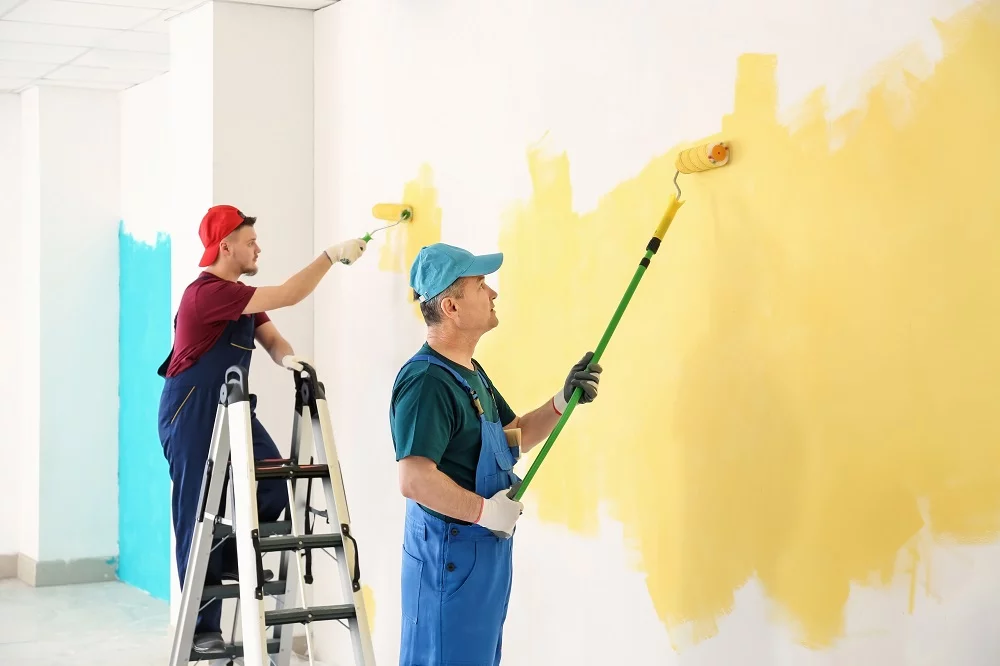House Painters Adelaide is one of the most popular DIY home improvement projects, and it’s easy to see why. A fresh coat of paint can transform a room, adding vibrancy, warmth, or even a sense of calm. However, achieving a professional-looking finish requires more than just slapping paint on a wall. Many homeowners, in their eagerness to complete a project, fall victim to common painting mistakes that can lead to less-than-ideal results. This article highlights some of these common mistakes and provides tips on how to avoid them, ensuring that your next painting project is a success.
1. Skipping Surface Preparation
One of the most common and costly mistakes in painting is skipping proper surface preparation. Dirty, greasy, or uneven surfaces can prevent paint from adhering correctly, leading to peeling, chipping, or a blotchy finish. Many DIY painters are eager to start applying color and overlook the critical step of preparing the walls.
How to Avoid It: Always clean the surfaces thoroughly before painting. This might involve washing the walls with a mild detergent, especially in kitchens where grease can accumulate, or using a mildew remover in bathrooms. In addition to cleaning, patch any holes or cracks, sand rough spots, and apply a primer if necessary. Proper preparation ensures a smooth, durable finish.
2. Using the Wrong Type of Paint
Another common mistake is choosing the wrong type of paint for the job. Different paints are formulated for specific purposes, and using the wrong one can result in poor coverage, durability issues, or a finish that doesn’t meet your expectations.
How to Avoid It: Before purchasing paint, consider the room’s function and conditions. For example, bathrooms and kitchens are prone to moisture, so using a mildew-resistant, satin or semi-gloss paint is ideal. High-traffic areas like hallways may benefit from a durable, washable finish, such as eggshell or satin. Make sure to use exterior paint for outdoor surfaces, as it’s formulated to withstand weather conditions.
3. Neglecting to Use Primer
Primer is often viewed as an unnecessary step by many DIY painters, but skipping it can lead to problems, particularly when painting over dark colors, stains, or bare drywall. Primer helps to create a uniform surface, improving paint adhesion and coverage.
How to Avoid It: Always assess whether a primer is needed before you start painting. If you’re painting over a dark color, switching from a glossy to a flat finish, or painting a porous surface like new drywall, a primer is essential. Many modern paints include a built-in primer, but for significant color changes or problem surfaces, a dedicated primer is still recommended.
4. Overloading the Brush or Roller
A common mistake, especially among beginners, is overloading the brush or roller with too much paint. This can lead to drips, streaks, and an uneven finish. Overloaded brushes can also make it difficult to control where the paint goes, resulting in messy edges and splatters.
How to Avoid It: Dip the brush or roller into the paint just enough to cover the bristles or roller surface, and then gently tap off the excess. It’s better to apply multiple thin coats rather than one thick coat, as this helps to avoid drips and ensures an even application. Thin coats also dry faster and more evenly.
5. Ignoring Drying Times
Rushing the process is a mistake that often leads to poor results. Painting over a surface that hasn’t fully dried can cause smudging, uneven color, and peeling. Patience is crucial when it comes to painting.
How to Avoid It: Follow the manufacturer’s recommendations for drying times between coats. Factors like humidity and temperature can affect drying times, so be sure to take these into account. It’s better to wait a little longer between coats than to rush and ruin your hard work.
6. Not Using Painter’s Tape Properly
Painter’s tape is a great tool for achieving clean, crisp edges, but it’s often misused. Failing to apply it properly or remove it at the right time can result in paint bleeding under the tape or peeling off when the tape is removed.
How to Avoid It: Apply painter’s tape to clean, dry surfaces, pressing it down firmly to ensure a tight seal. Remove the tape before the paint is completely dry to prevent peeling, ideally when the paint is dry to the touch but not fully cured. If the paint has dried, use a sharp utility knife to score along the edge of the tape before removing it to avoid pulling off any paint.
7. Inadequate Ventilation
Painting in a poorly ventilated area can lead to a buildup of paint fumes, which is not only unpleasant but also potentially hazardous to your health. It can also affect the drying process, leading to longer drying times and an uneven finish.
How to Avoid It: Ensure good ventilation in the area you’re painting by opening windows and doors or using fans to circulate air. This will help dissipate fumes and speed up the drying process. If you’re working in an area with little ventilation, consider using low-VOC or zero-VOC paints to minimize exposure to harmful fumes.
Conclusion
Avoiding these common painting mistakes can make the difference between a frustrating, time-consuming project and a satisfying, successful one. By taking the time to properly prepare surfaces, choosing the right paint, applying it correctly, and allowing it to dry fully, you can achieve a professional-quality finish that will enhance the beauty and value of your home. With a little patience and attention to detail, your painting project can be a rewarding experience that transforms your space exactly as you envisioned.
